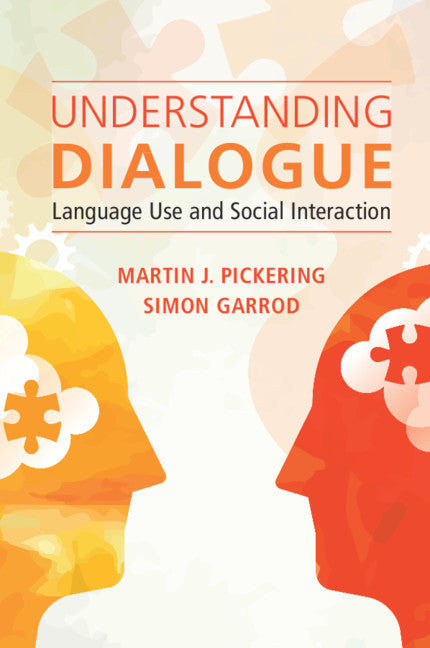Freshly Printed - allow 6 days lead
Couldn't load pickup availability
Understanding Dialogue
Language Use and Social Interaction
Using a novel model, this book investigates the psycholinguistics of dialogue, approaching language use as a social activity.
Martin J. Pickering (Author), Simon Garrod (Author)
9781108461931, Cambridge University Press
Paperback / softback, published 7 January 2021
350 pages
15 x 23 x 1.5 cm, 0.44 kg
'This book is both timely and important. The consequences of the Covid-19 pandemic have changed conditions for communication in multiple ways, from interactions behind face masks to dialogues via Skype and Zoom.' Peter Hagoort, Neurobiology of Language Department, Max Planck Institute for Psycholinguistics
Linguistic interaction between two people is the fundamental form of communication, yet almost all research in language use focuses on isolated speakers and listeners. In this innovative work, Garrod and Pickering extend the scope of psycholinguistics beyond individuals by introducing communication as a social activity. Drawing on psychological, linguistic, philosophical and sociological research, they expand their theory that alignment across individuals is the basis of communication, through the model of a 'shared workspace account'. In this workspace, interlocutors are actors who jointly manipulate and control the interaction and develop similar representations of both language and social context, in order to achieve communicative success. The book also explores dialogue within groups, technologies, as well as the role of culture more generally. Providing a new understanding of cognitive representation, this trailblazing work will be highly influential in the fields of linguistics, psychology and cognitive linguistics.
1. The Challenge of Dialogue
Part I. The Shared Workspace Framework: 2. A Systems Analysis of Joint Activity
3. Executing, Understanding and Controlling Joint Activity
4. Dialogue as a Joint Activity
5. Producing, Controlling, and Understanding Dialogue
Part II. Alignment During Dialogue: 6. Interactive Alignment and Linguistic Representations
7. Alignment of Dialogue Models
Part III. Using the Shared Workspace Efficiently: 8. Saying Just Enough
9. Speaking in Good Time
Part IV. Extending the Shared Workspace Framework: 10. Communication Beyond the Minimal Dyad
11. Culture and Language Use
12. Conclusion.
Subject Areas: Cognitivism, cognitive theory [JMAQ], Psycholinguistics [CFD], Linguistics [CF]


